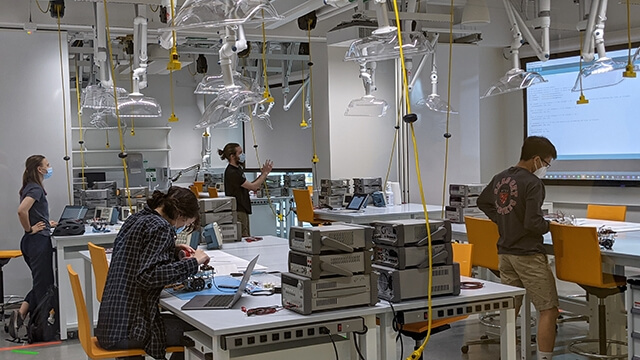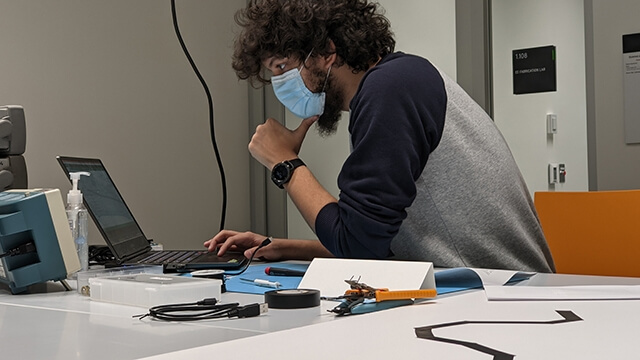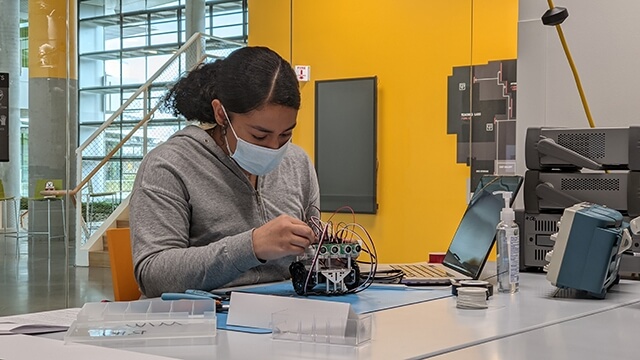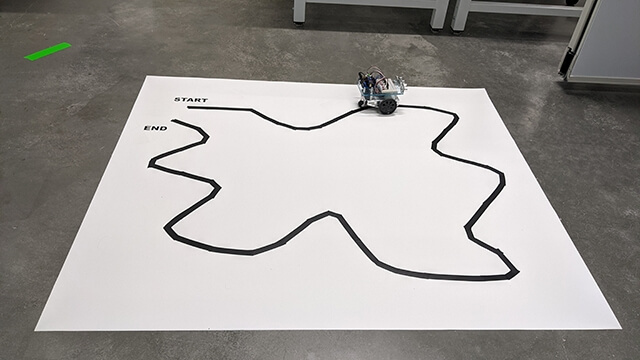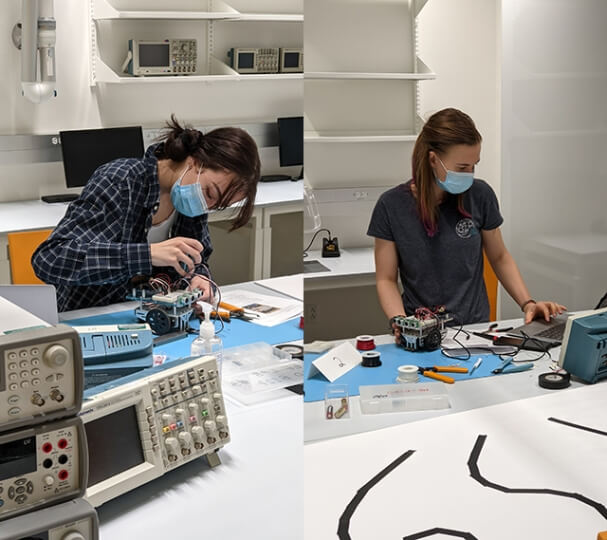Students in “An Introduction to Electrical Engineering” (ES 50) work on robots they have been developing using a remote learning lab kit in the Active Learning Labs during a Harvard University pilot project to gain insights on hybrid classes. (Photo courtesy of the SEAS Active Learning Labs)
As part of a Harvard University pilot project to gain insights on hybrid classes, six students enrolled in “An Introduction to Electrical Engineering” (ES 50) were invited to the Active Learning Labs in the Science and Engineering Complex. The students modified a robot to achieve a new task: line following, using a set of reflective infrared sensors to infer the robot’s position with respect to the line. The lab work enabled the students to leverage knowledge of mixed-signal hardware, algorithm development, and embedded computing, and built on work they had done earlier in the semester using a remote learning lab kit.
First-year student Francisco Marquez works on a robot lab in the Active Learning Labs inside Harvard's new Science and Engineering Complex. (Photo courtesy of the SEAS Active Learning Labs).
“It was so exciting to be back in the lab in-person. I've already been to the SEC many times since I do research at the Harvard Microrobotics Lab, but it was nice to be there in a class setting,” said Marta Pawluczuk, S.B. ’22, a mechanical engineering concentrator. “Even though ES 50 did a good job of sending a lot of equipment to our homes for home labs, it was easier to get excited and engaged with the course materials in-person. Also, seeing other people in person that are in the same class as me gave me a greater appreciation for the class.”
First-year student Ezenia Diaz-Lembert makes adjustments to a mobile robot. (Photo courtesy of the SEAS Active Learning Labs).
“The SEC really surpassed my expectations with just how big it was and how many resources are available. It seems like there is a space for every type of activity, from studying, to lectures, to labs, to grabbing a meal,” said course assistant Jaylen Wang, S.B. ’22, an electrical engineering concentrator. “I really like how much the design promotes collaboration with a lot of collaborative and open spaces. The lighting is also really nice so it doesn't make you feel like you're completely inside (which is nice for those who will be spending many hours inside).”
The students programmed the robots to follow a line using a set of reflective infrared sensors. (Photo courtesy of the SEAS Active Learning Labs)
“Obviously, the SEC is a beautiful, sparkly building. I've spent a lot of time on the more research based floors (primarily the fourth floor) but it was nice to spend some time on the more undergrad-focused floors,” Pawluczuk said. “I liked how there was a lot more space designated for undergrad engineering. Of course, with COVID, we still had to keep our distance and such, so I couldn't move around as much, but seeing all of the things that will be immediately available to us at the SEC makes me very excited to get back to the building in the fall.”
Students Lauryn Wilson (left) and Marta Pawluczuk work on their robots during an in-person lab session at the Science and Engineering Complex. (Photo courtesy of the SEAS Active Learning Labs).
Press Contact
Adam Zewe | 617-496-5878 | azewe@seas.harvard.edu
